9 European Gems I Swear By — Plus 3 Bonus Destinations You’ve Probably Never Heard Of
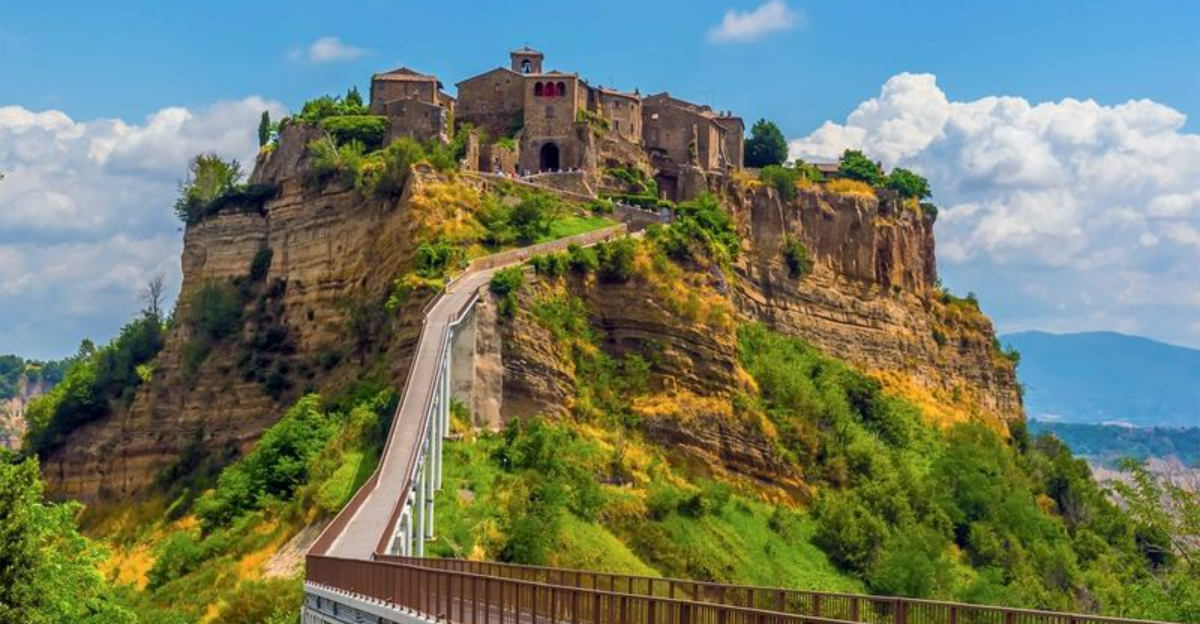
After years of wandering through Europe’s cobblestone streets and hidden valleys, I’ve discovered places that steal your heart without emptying your wallet.
These aren’t your typical tourist traps with long lines and overpriced souvenirs. Instead, I’m sharing my personal collection of European treasures – nine spectacular spots I return to again and again, plus three secret locations that even seasoned travelers might have missed.
1. Porto’s Riverside Magic
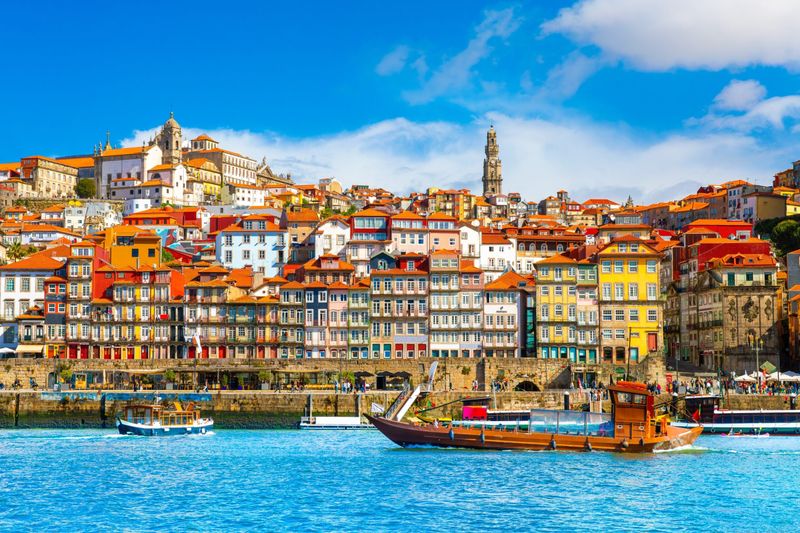
My first visit to Porto happened by accident when my flight to Lisbon got canceled. What a fortunate mistake that turned out to be! The colorful houses cascading down to the Douro River create a postcard-perfect scene that’s impossible to forget.
If you’re a wine lover like me, the port wine cellars across the river in Vila Nova de Gaia are a must-visit. I spent an entire afternoon sampling different varieties, each more delicious than the last.
Unlike crowded Barcelona or overpriced Paris, Porto offers authentic Portuguese charm without the tourist markup. The locals welcomed me with open arms and plates of fresh seafood.
2. Ljubljana’s Fairytale Appeal
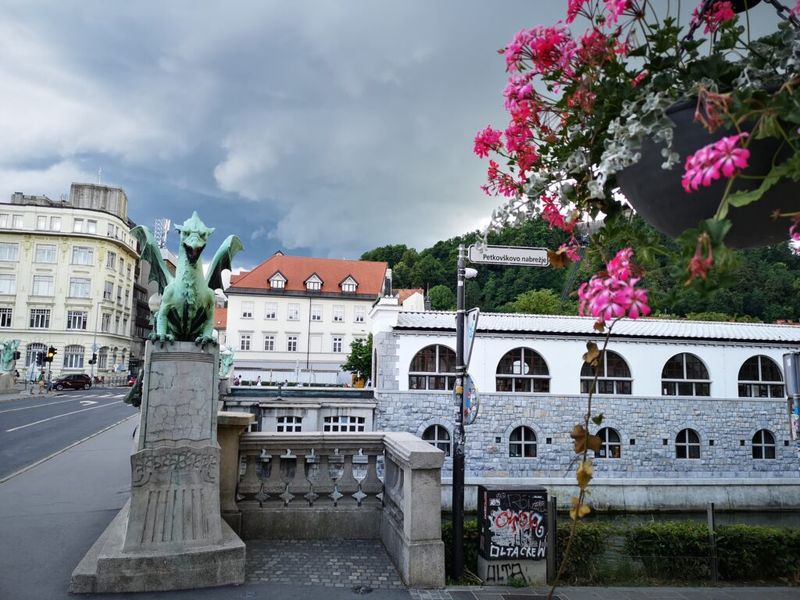
Have you ever walked through a city and felt like you stepped into a storybook? That’s Ljubljana for me. Slovenia’s capital somehow remains under the radar despite being one of Europe’s most charming small cities.
Dragon statues guard the famous bridge while the castle watches over everything from its hilltop perch. I rented a bike and followed the emerald Ljubljanica River through the car-free center, stopping at riverside cafés whenever the mood struck.
The city’s size is perfect – big enough to keep you entertained for days but small enough to feel intimate. My favorite memory? Watching the sunset from the castle while listening to a local musician play traditional songs.
3. Ghent’s Medieval Splendor Without the Crowds
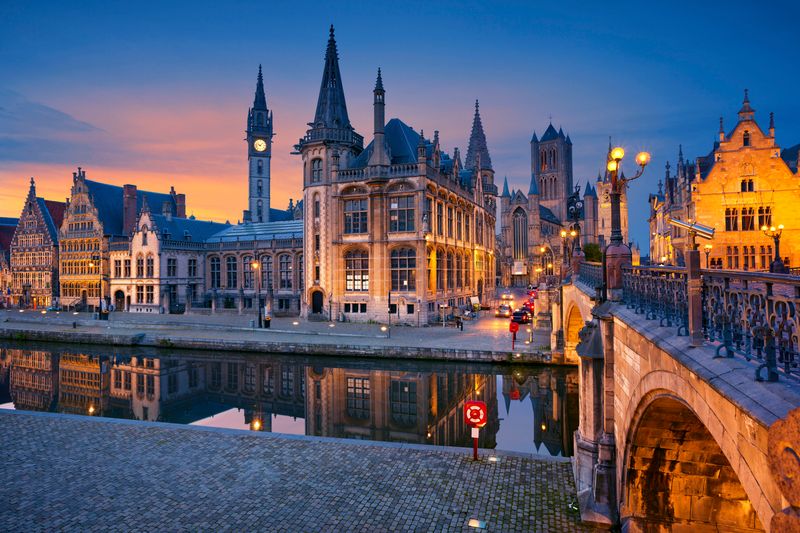
While tourists flock to Bruges, I sneak away to Ghent. Just 30 minutes apart, these Belgian cities offer similar medieval beauty, but Ghent keeps its authentic vibe with a quarter of the visitors.
Wandering along the canals at night, with historic buildings illuminated by a thoughtful lighting plan, feels like time travel. The city’s three towers – Saint Bavo’s Cathedral, the Belfry, and Saint Nicholas’ Church – create a skyline straight from the Middle Ages.
My secret spot? The tiny bar hidden behind Gravensteen Castle serves over 500 Belgian beers. The bartender remembers my name and always recommends something new based on my last visit’s favorites.
4. Lake Bled’s Island Church
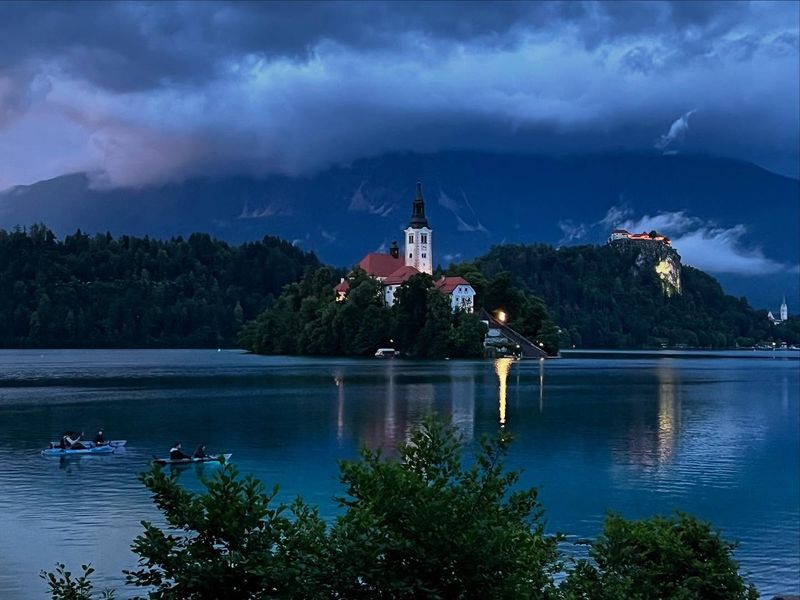
Morning mist hovers over Lake Bled as I row toward the tiny island in its center. Slovenia’s alpine jewel feels almost too perfect to be real – like someone designed the ideal fairy tale setting.
The church bells ring out across the water when visitors pull the wishing rope. According to local tradition, if you make the bell ring three times with one pull, your wish comes true. My wish was to return, and I’ve been back four times since!
Hiking trails surround the lake, leading to viewpoints that showcase the Julian Alps reflecting in crystal-clear waters. Don’t miss the cream cake at Hotel Park – I’ve never tasted anything like it anywhere else in the world.
5. Sintra’s Colorful Palaces
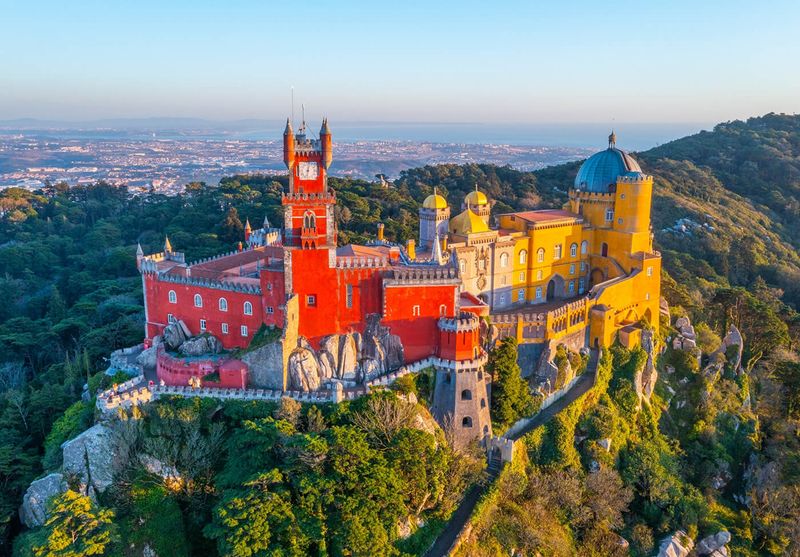
Just outside Lisbon lies a wonderland of fantastical palaces that seem plucked from different fairy tales. Sintra captivated me so completely that my planned day trip turned into a three-night stay!
The candy-colored Pena Palace steals most visitors’ hearts with its red and yellow towers rising from lush forests. I arrived early to beat the crowds and had magical moments alone in rooms where Portuguese royalty once lived.
Beyond the famous spots, hidden gems await discovery. The mysterious Quinta da Regaleira gardens with their spiral initiation wells became my playground for an entire afternoon. Each palace tells a different story – I felt like I was walking through the pages of various fantasy novels.
6. Hallstatt’s Lakeside Perfection

Tucked between soaring Alps and the glassy surface of Lake Hallstatt sits Austria’s most photogenic village. So perfect it looks almost unreal, Hallstatt became famous when China built an exact replica – but nothing compares to the original!
During my winter visit, snow dusted the 16th-century buildings while smoke curled from chimneys. The entire village has fewer than 1,000 residents, creating an intimate atmosphere that’s impossible to find in larger destinations.
A boat ride across the lake provides the best views of the village nestled against the mountains. For a unique experience, I visited the ancient salt mines that brought wealth to this tiny community centuries before tourists discovered its picture-perfect charm.
7. Kotor’s Bay of Wonder
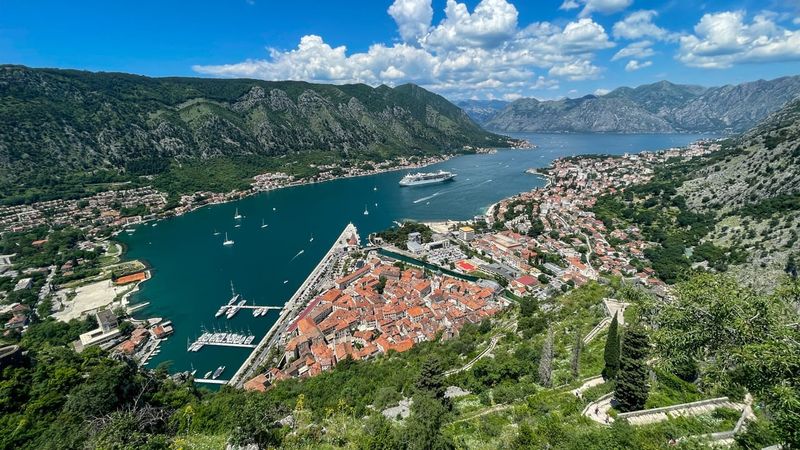
Fjord-like mountains plunge dramatically into blue waters, creating Montenegro’s most spectacular natural setting. Kotor’s walled old town sits at the innermost point of this bay, protected from both invaders and cruise ship crowds who rarely venture beyond the main square.
Climbing the 1,350 steps to the fortress above town nearly killed me, but the panoramic views made every labored breath worthwhile. The stone walls zigzag up the mountainside like a miniature Great Wall of China.
When the day-trippers leave, Kotor transforms into a magical place where cats outnumber people in the marble streets. I stayed in a tiny apartment inside the medieval walls and woke to church bells that have rung for centuries.
8. Český Krumlov’s Riverside Charm
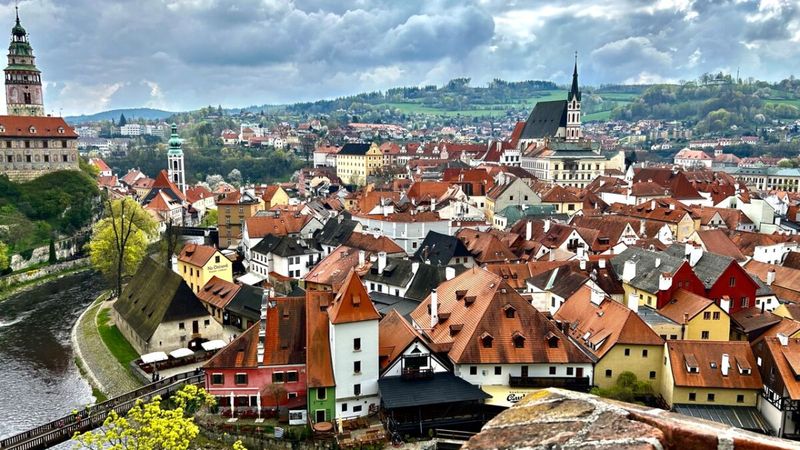
This tiny Czech town curves around its castle like a child hugging a parent’s leg. The Vltava River wraps around Český Krumlov’s medieval center so completely that it forms a natural moat, creating a fairy-tale island of history.
Red rooftops contrast against the green hillsides, creating a scene so picturesque that I filled my phone’s memory with photos in just one afternoon. The massive castle tower watches over cobblestone streets where artists sell watercolor paintings of the very views you’re enjoying.
Summer brings rafters floating lazily down the river, waving at restaurant patrons dining on riverside terraces. I spent hours at a café table watching this peaceful parade of visitors enjoying simple pleasures in a setting that hasn’t changed much in 500 years.
9. Civita di Bagnoregio: Italy’s Dying Town
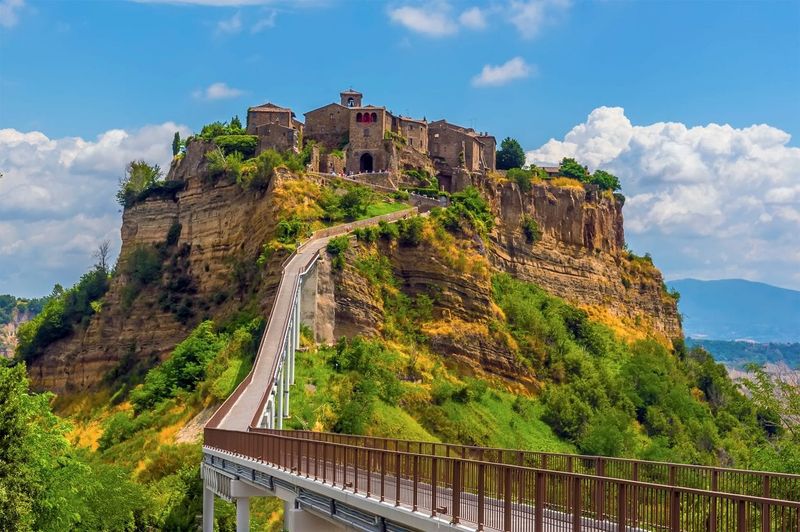
Connected to the world by only a narrow pedestrian bridge, this crumbling hilltop village seems to float among the clouds. Erosion slowly claims Civita di Bagnoregio piece by piece, earning it the nickname “The Dying Town” – though tourism has recently breathed new life into its ancient streets.
Just a handful of permanent residents remain, keeping watch over stone houses that date back to Etruscan times. The absence of cars creates an otherworldly silence broken only by the distant sound of chickens or the clink of espresso cups.
My visit during a thunderstorm emphasized the village’s dramatic position – lightning illuminated the deep ravines surrounding this isolated community while rain poured through centuries-old drainage spouts carved as gargoyles.
10. Albarracín: Spain’s Terracotta Dream
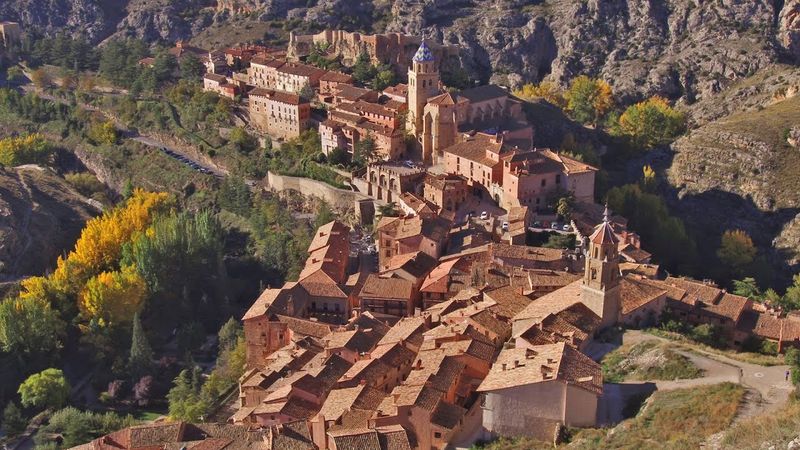
Hidden among the mountains of eastern Spain, this medieval village seems carved from the reddish stone that surrounds it. Albarracín’s uniform terracotta buildings create a mesmerizing monochrome effect that changes with the sun’s position throughout the day.
Narrow streets twist upward at impossible angles, sometimes barely wide enough for my shoulders to pass through. I got lost repeatedly but didn’t mind – each wrong turn revealed another perfect composition of ancient doorways, flowerpots, and worn stone steps.
Despite being recognized as one of Spain’s most beautiful villages, Albarracín remains delightfully uncrowded. I stayed in a 300-year-old house converted into a small hotel, where the owner proudly showed me original ceiling beams and told stories of the building’s past inhabitants.
11. Gjirokastra’s Ottoman Time Capsule

While travelers flock to neighboring Greece and Croatia, Albania remains Europe’s best-kept secret. Gjirokastra, a UNESCO-protected Ottoman town, captured my heart with its distinctive slate-roofed houses cascading down a mountainside.
These aren’t ordinary homes – they’re fortress-like structures designed to withstand attacks, with tiny windows and massive stone walls. I wandered through the immense castle overlooking town, where weapons from different centuries tell Albania’s complicated history.
The most memorable part? Drinking raki (local fruit brandy) with an elderly man who invited me into his 300-year-old home and showed family photos spanning generations who had lived under Ottoman rule, Italian fascism, and communist isolation. Albania’s tourism industry is just beginning – visit now before everyone discovers it.
12. The Azores: Portugal’s Wild Atlantic Eden
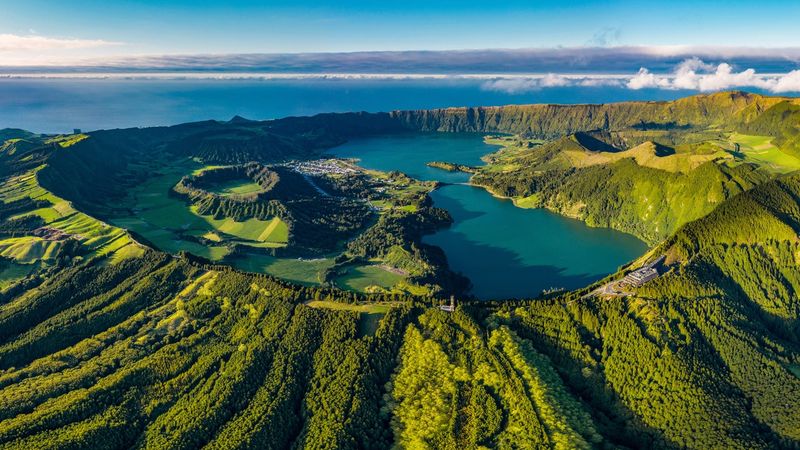
Floating in the middle of the Atlantic Ocean, this volcanic archipelago feels like Hawaii relocated to Europe. The Azores surprised me with landscapes so diverse I thought I was island-hopping between different continents rather than a single Portuguese territory.
On São Miguel, the largest island, I hiked around crater lakes that shifted from emerald to sapphire depending on the sunlight. Thermal hot springs bubbled alongside fields where cows produced some of Europe’s finest dairy products.
Unlike mainland Portugal, mass tourism hasn’t discovered these islands yet. I soaked in ocean-side hot springs completely alone, watched whales from empty black sand beaches, and ate fresh seafood at prices that seemed like mistakes on the bill. The Azores offer Europe’s best adventure-to-crowd ratio.
